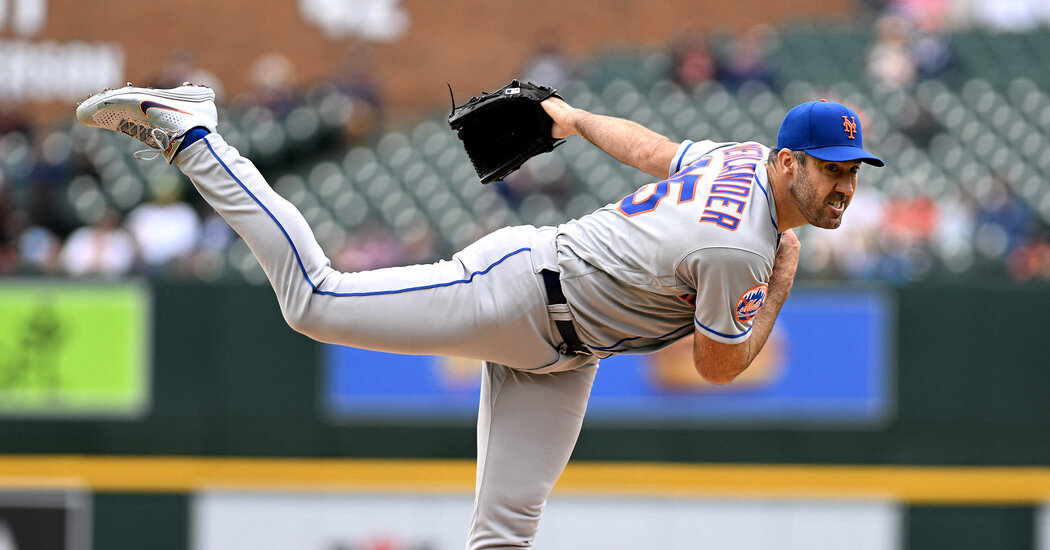Fifty Years Ago the Men Boycotted Wimbledon. That Changed Everything.
Stan Smith’s 1972 Wimbledon cup sits alongside his 1971 United States Open winner’s prize in a trophy case inside his Hilton Head Island, S.C., home. Smith had hoped to defend his title in ’73.
“I was playing the best tennis of my life,” said Smith, who had lost in the Wimbledon final in 1971 to John Newcombe in five sets and then went on to beat Ilie Nastase in the 1972 final, also in five sets. “Once you’ve won it you always want to win it again.”
But in 1973, Smith decided not to play. Instead, he and 80 other players voted to boycott the tournament just before the first matches in support of the player Nikola Pilic. Pilic had been barred from the tournament by the International Lawn Tennis Federation, now the I.T.F., the world governing body of tennis that runs all the Grand Slam tournaments, for refusing to play a Davis Cup match for his native Yugoslavia a month earlier. “It was really difficult,” said Smith in a phone interview.
This year, as the Women’s Tennis Association celebrates the momentous meeting at Wimbledon 50 years ago in which Billie Jean King encouraged her fellow players to form that organization, the Association of Tennis Professionals is also remembering a watershed moment in its own history. It was when its members banded together, flexed their muscles and walked out on the most prestigious tournament in tennis, with ramifications that are still being felt today. Among them: greater communication between the players and the tournaments, and wider distribution of prize money at all levels of the pro game.
“This was the beginning of the ATP and players coming together because it was really testing the relationship,” said Andrea Gaudenzi, the current ATP chairman, who was born one month after the boycott, by video call. “Everybody was surprised of the support that Niki got. And that made the players think that if we get together, we are powerful and can do something. That was a very important milestone.”
While the male players group had been started a year earlier, the men were still enduring power struggles between its members and the tournaments. Many of the top players were committed to World Championship Tennis, a professional circuit founded in 1968 that was backed by the Texas businessman Lamar Hunt. The tour competed with the International Lawn Tennis Federation.
The ATP’s initial group of players, called the Handsome Eight, included Cliff Drysdale, Pilic and Newcombe. Arthur Ashe, Rod Laver and Ken Rosewall soon signed on.
In 1971, the federation, laboring to maintain control over players, voted to ban all competitors from the rival World Championship Tennis from the federation’s major events for 1972, including the French Open and Wimbledon. The ban lasted just one year, and created animosity with players.
Pilic and his doubles partner, Allan Stone, qualified for the 1973 WCT Masters, but the event coincided with a Davis Cup quarterfinal tie between Yugoslavia and New Zealand. Pilic opted to play the World Championship Tennis event, infuriating Yugoslavia, which went on to lose to New Zealand.
The Yugoslav Tennis Federation asked the International Lawn Tennis Federation to act against Pilic. The federation suspended him for nine months, but that was reduced to one month, just long enough for him to miss Wimbledon.
“Probably if I had played we would have won easily,” Pilic said by phone from his home in Croatia about the Davis Cup. “There was a big fight with the [Yugoslav] federation” and then with the lawn tennis federation. “They could do whatever they wanted. We had no control over the sport. We had to do something.”
When the players gathered in London for Wimbledon, there were countless discussions and late-night meetings. Laver, the four-time champion, said he wouldn’t compete. So did the three-time winner Newcombe, as well as Smith, Rosewall and Ashe.
“We needed to take the pulse of the players,” said Drysdale, the ATP’s first president, by phone. “We were professionals, and we wanted to stay that way. Niki had the right to play wherever he wanted to. There was no opposition to what we were doing. We never wrung our hands wondering if we were doing the right thing.”
On the morning of the first day of play, Drysdale phoned the tournament referee, Mike Gibson, at 9, asked him if he had a pen and paper and began reading aloud the names of the 81 men who would no longer be competing, including 12 of the 16 seeds. By the time play began hours later there were 29 qualifiers in the draw and 50 lucky losers, men who had lost in the qualifying tournament but were suddenly awarded spots in the main draw.
There was some opposition to the players’ plan to withdraw. Nastase, who had been runner-up to Smith the year before, opted to compete. So did Roger Taylor, whom Pilic said he refused to speak to for a year afterward.
Jimmy Connors also played, and Bjorn Borg, then just 17, did too, his first Wimbledon.
Jan Kodes, a two-time French Open champion from Czechoslovakia, also opted to play and won his only Wimbledon. He beat Alex Metreveli of Russia in the final.
“No one even asked me to support the boycott,” Kodes said via email. “I was not an ATP member, so I was not in the room. No one believed that this would happen. In my opinion it was pushed by the newly established ATP to show and increase the players’ power.
“I’m not sure if the boycott was really necessary,” added Kodes, who went on to reach the final of the U.S. Open two months later. “There are many controversial situations and problematic decisions in tennis.”
Drysdale, the former player, said the boycott had a long-lasting effect.
“It changed the game forever because no one has ever forgotten what happened that year,” he said. “And we are all aware that it could happen again, depending on how the players are treated.
“Everyone knows that the players walked out once on one of the most important tournaments in the world and no one will ever be sure that they wouldn’t do it again.”
Gaudenzi said he believed that player unity was important to the growth of the game. What he would like to see now is greater synergy between the ATP, the WTA, the I.T.F. and the Grand Slam tournaments.
“We need to come together and collaborate a lot closer,” said Gaudenzi, who stopped short of saying there should be one commissioner for the men’s and women’s tours. “I want tennis to be bigger. I want tennis to be relevant vis-à-vis other sports and other entertainment. We need to adapt to the new generation, the new technology, the new way fans are consuming the content and the competition. So we need to step up our game, and the only way to do it is to get together.”
Pilic, now 83, still marvels at the tremendous sacrifice his fellow players made for him.
“In that time I thought, maybe Niki Pilic is not that important,” he said. “But we were the products, and you cannot have the tournament without the products. People could not believe that we did it. But we proved in that moment that we were a very strong group. We lost that year, but the war was won.”


